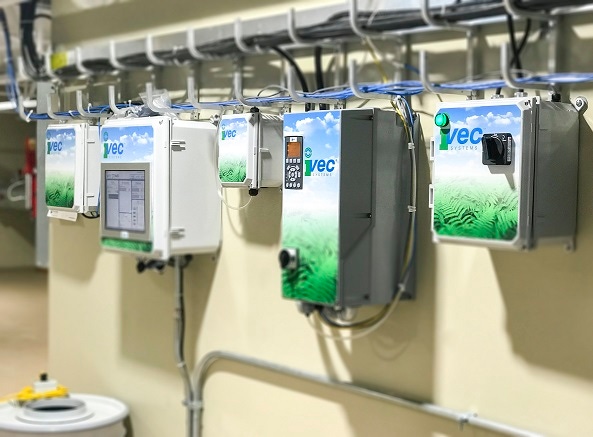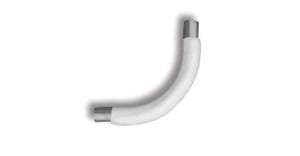January 21, 2020

Air filtration is often overlooked when it comes to manufacturing operations. Despite the critical impact of air filtration on manufacturing effectiveness, efficiency, and safety, many find it a daunting topic. But it doesn’t have to be. A quick grounding in the six E’s of effective air filtration can help managers save time and money and avoid costly mistakes.
Frequently, an assessment of air filtration starts with mitigating exposure to contaminants, and ends when that box is checked, with little thought given to best practices or system performance. While considering exposures is a great place to start, it’s just one step on the path to fine-tuning an air filtration system that delivers years of effective, reliable service.
Six E’s of Air Effective Filtration
• Exposure
• Explosive and flammable dust
• Efficiency
• Evacuation
• Emissions
• Energy
With even a basic understanding of these factors, any manufacturing operation can achieve peak air filtration performance and air quality.
Click here for information about the upcoming International Powder & Bulk Solids Conference/Exhibition
Exposure
Exposure is defined by the material in question. Whether it be steel, wood, plastics, composites, or food products, different types of dust and mist have different limits on exposure and different methods to measure that exposure. It is important to work with a vender who understands both the regulatory requirements and the need for demonstrable performance. Given the upswing in lawsuits concerning Welder’s Disease (a neurological disease similar to Parkinson’s Disease), showing an effort to protect workers becomes even more important.
Certain materials such as stainless steel require a strict monitoring of particulate exposure. Very few products on the market can meet the coming 0.02 mg/cu m manganese limit that the industry must abide by to manually weld stainless steel. Other materials such as wood dust can cause respiratory issues such as asthma, hypersensitivity pneumonitis, and chronic bronchitis. Mist applications can have smell and bacterial issues as well.
Often, workers’ expectations exceed those of OSHA or other organizations. Employees are more aware than ever of health risks, which means the working environment is becoming more scrutinized. Not meeting workers’ expectations on exposure levels may lead to higher turnover rates, and in the end, higher costs.
Explosive and Flammable Dust
Depending on the material, certain dust or mist can pose explosive or flammable risks. Each application must be analyzed individually. Some needs are driven by insurance requirements, others by regulations. Experts who specialize in explosion applications can assess projects according to NFPA 652, 654, 664, 484, and 61. Requirements vary between wood, metal types, or food products, and other types of particulate. If determined necessary, the dust should be tested according to ASTM E1226, E1515, E2019, and E1491. Industry professionals can determine the need for no-return valves, abort gates, explosion vents, or other devices.
Dust can also mix with other materials. Welding fumes can contain high amounts of stamping oil which can increase flammability risk. Wood dust may be mixed with resins which change the combustibility characteristics. Oil mist can be ignited from hot burs in CNC operations. Other dust must never be mixed, such as aluminum and steel. There are many variables which can affect performance and protection requirements; always consult an expert who specializes in dust combustibility.
Efficiency
Typically, filter efficiency is the only factor that uninformed buyers look at when considering air filtration systems. Filter efficiency does not refer to energy usage, but rather to the filter’s ability to restrict particulate flow. Filter efficiency is defined by a given percent particulate blocked from passing, based on the particulate size. For example, a filter may block 99% of particulate at 3 microns, but only block 30% at 0.5 microns. Filter performance is driven by the size of the holes in the media, i.e., the pore size. Smaller pores restrict smaller particulates. Because of this, the filter efficiency should be determined by the type of dust being collected and the particulate size present. Welding smoke, grinding dust, wood dust, and aluminum polishing each have different particulate sizes and therefore different efficiency requirements.
Filters can be classified depending on the filter style and efficiency such as HEPA, dust spot efficiency, arrestance, percent ASHREA, DOP, and MERV rating; the most common being MERV and HEPA. Minimum Efficiency Reporting Value (MERV) is a scale from one to 20 with higher numbers being more efficient. High Efficiency Particulate Air (HEPA) scale is a rating from E10 to U17 with HEPA H13 filters being the most common and middle of the HEPA scale. At approximately MERV 15 and HEPA E10, the scales begin to overlap. Be aware that some regulations may require a HEPA filter even when a MERV-rated filter will suffice.
Filter efficiency does not indicate the filter’s life or maintenance cycles. Nor do filters of the same efficiency have the same filter life. Filter design, materials, and cleaning method vary greatly between vendors, resulting in wide variability in filter longevity. This is complicated even further through variations in filter media types and coatings, such as nano coating, PTFE or spunbond polyester.
Evacuation
Evacuation of the particulate is always the focus and end goal of any filtration project. Methods depend on the application, but will typically fall into two categories:
• Source capture solutions
• Ambient solutions
A qualified air filtration expert will be able to advise on the best methods for a given application. In general, particulate type, size, and mass density will dictate the filtration needed. For instance, older machining centers have lower-speed spindles and create larger particles, while new CNC machines operate at much higher speeds and produce particulate too small for the eye to see. This smaller particulate can stay airborne for hours.
Source capture applications will typically have a single driving criterion. For example, some applications such as wood cutting or metal grinding create large particles which will not be airborne long enough to be captured using ambient solutions. Others — such as manual welding of stainless or galvanized steel — may have exposure requirements where smoke cannot be allowed to escape the area. In this instance, a well-designed fume gun is often the best choice. For a small project, such as a single weld cell, multiple ambient collectors may be impractical. With proper designs, source capture typically removes more particulate at a faster rate targeted at the point of origin.
Ambient applications rely on the air turnover of a large volume or area, such as a welding line. Multiple units are used to create air currents that carry particulate into the collectors. Because of this, ambient solutions require no duct. Prime candidates for ambient solutions may have a large bridge crane or other obstructions preventing the installation of duct. Some projects might have welding locations that change on a daily basis, making rerunning duct or multiple drops unworkable. Ambient systems require specialized experience, and not all suppliers understand the complexities of this type of design. Done correctly, ambient solutions often provide lower upfront costs and lower operating costs, providing the best value.
Emissions
Permissible emissions requirements are the maximum permitted levels that can be exhausted to the outside or returned back into the building. Emission levels indicate the quality of the air leaving the collector and can contain multiple quantities and types of contaminants — specifically, gases, vapors, and particulate.
The only reliable way to document emissions is with specialized equipment. Every credible air filtration expert will use a particulate monitor which provides concentration densities based on the mass of contaminant per volume of air. Project success can be quantified by taking before-and-after readings, while filter efficiency is verified by taking inlet and exhaust readings. Keep in mind, particulate monitors can be set up to measure overall concentration or readings based on particulate size. The particulate monitor can help determine if filter efficiency needs to be increased.
Another emissions component may be chemical or smell. In some cases, combinations of dust and fumes may be extracted. For instance, with welding, the fumes are so minor only the dust itself is considered. In other cases, the addition of scrubbers or activated carbon filters may be required to treat chemicals in the air.
Energy
Often, energy efficiency is the least examined aspect of dust collection; however, it has the most impact on the manufacturer. A properly designed system can decrease operating costs of the collection system by upwards of 85%.
Some collector manufacturers design systems that have unnecessarily high internal static pressures, poor cleaning controls, or inefficient fan designs. These systems may have large internal losses, often increasing collector energy usage by 60%. In addition, inexperienced application consultants may misapply products — duct that is too small, which generates increased pressure drop, or inefficient ambient systems that require additional flow and collectors. Understanding collector and system design is vital to creating an energy-efficient system.
One of the best ways to reduce energy cost is through “smart” operations. By implementing controls, custom cleaning algorithms can be created, which amplify the effectiveness of each cleaning cycle. Implementation of gated controls can direct air flow to just the operations that are running, redirecting it from operations that are idle. Control of motors is a critical component of the energy formula. By reducing the fan speed to only what is necessary, power consumption is reduced exponentially. Gated control, in combination with motor control, can significantly boost system efficiency. Gated controls can even resurrect an overburdened collector by adding extra capacity while reducing operating costs, making retrofit controls a viable option.
The same concept can be applied to an ambient system. By monitoring demand, systems can automatically be turned on or off. Through sensor data, individual system performance can be evaluated and improved accordingly. Sending that information back to a central panel allows the ambient collectors to work in concert, making the whole greater than the sum of the parts. Advanced control algorithms are the foundation for top-of-the-line “smart” factory and cloud-based solutions which can consistently reduce costs through predictive planning and reporting. Advanced software allows a network of ambient collectors to function in a team gaining efficiency from one another.
All six of these factors are important when evaluating an air filtration solution in a manufacturing environment. And, fortunately for operations managers, each represents an opportunity to boost performance, lower costs, save money and create safer working conditions.
Zach Kieser is an engineering manager with IVEC Systems. He has more than 14 years of experience designing and implementing filtration systems and automation controls technology for the manufacturing industry. For more information, call 866-670-4832, email [email protected], or visit www.ivecsystems.com.
More articles that may interest you:
How Much Do You Know About NFPA 652?
What You Need to Know About the New Edition of NFPA 652
Extracting Combustible Dusts at the Source
How to Use Dust Explosion Test Data to Ensure Facility Safety
Explosion Containment: A Comparison
You May Also Like


